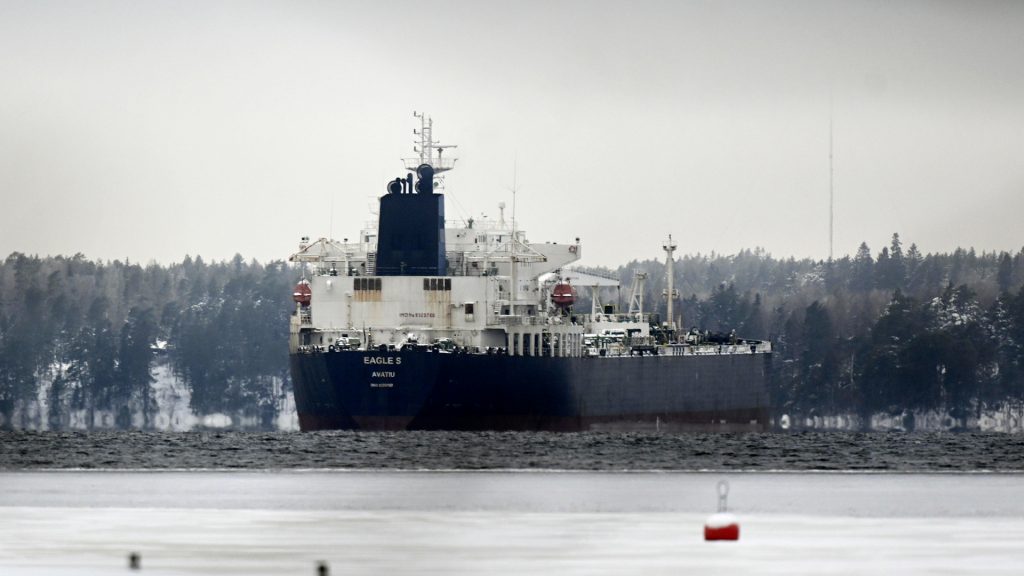Finland charges tanker crew over Baltic cable damage

Finland has charged the captain and two first officers of the Eagle S oil tanker with aggravated criminal mischief for allegedly dragging the ship’s anchor for more than 56 miles across the Gulf of Finland in December 2024, damaging five undersea electricity and telecom cables. Prosecutors said the incident caused nearly $70 million in damage and posed a “serious risk” to the country’s energy supply and telecommunications.
The National Prosecution Authority in Helsinki indicted the officers, who were reportedly Georgian and Indian nationals.
Authorities said the Cook Islands-registered vessel likely belongs to a “shadow fleet” that transports Russian oil in violation of sanctions. The ship had left a Russian port shortly before the incident. Finland’s President Alexander Stubb said weeks later that it was “definitely” linked to Moscow.
Eagle S and alleged sabotage
Finnish authorities seized the Eagle S in December 2024. According to a source close to the authorities, the ship was equipped with “spy equipment,” including laptops and devices to monitor NATO ships and aircraft. The source told The Telegraph that the crew likely knew of the surveillance activities but stayed quiet due to threats from Moscow.
The case is one of several incidents damaging Baltic Sea infrastructure since Russia’s invasion of Ukraine. In 2023, a Hong Kong-registered container ship ruptured a Baltic gas pipeline, and a Chinese vessel cut two Swedish data cables.
Western intelligence agencies have cautioned that some of the recent damage could be accidental, caused by poorly maintained ships and inexperienced crews.
How has NATO responded to Baltic Sea infrastructure threats?
NATO launched “Baltic Sentry” in January to protect undersea cables and pipelines in the Baltic Sea. The operation includes patrol aircraft, frigates and naval drones.
The alliance’s move follows repeated damage to at least ten undersea cables in the region since 2023. In January, then-German Chancellor Olaf Scholz said NATO is targeting Russia’s shadow fleet with sanctions, and Latvian President Edgars Rinkēvičs highlighted the challenge of monitoring ships that cross the Baltic daily.
“Let’s face it, we can’t ensure 100% protection, but if we are sending a bold signal then I think that such incidents are going to decrease or even to stop,” Rinkēvičs told reporters.
What are the broader security concerns?
Estonian leaders have called the Eagle S incident part of “Russian hybrid attacks” and a “systemic threat” to the region. EU foreign policy chief Kaja Kallas warned the vessel posed both security and environmental risks, announcing plans for new sanctions against Russia’s shadow fleet.
Pekka Toveri, a former director of Finland’s military intelligence, said prosecuting the Eagle S officers could deter future acts, noting, “The next captain will think when he gets orders to drop an anchor … that it is not in their best interests to do that.”
Finland’s transmission system operator, Fingrid, and cable manufacturer Nexans say they have completed repairs to the damaged Estlink-2 subsea interconnector between Finland and Estonia.
NATO and regional partners are still investigating the incident and bolstering defenses against future threats to critical infrastructure.





